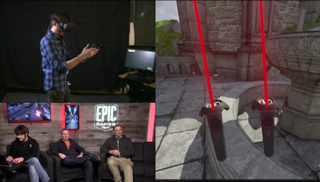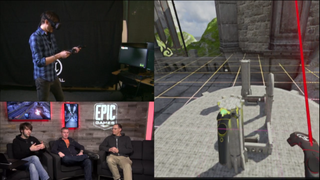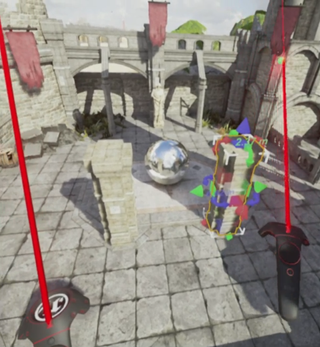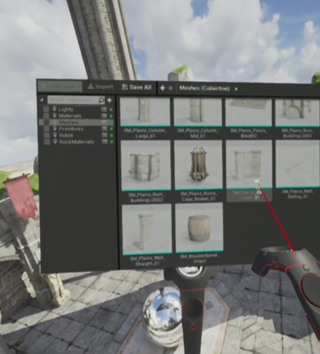Design Games In Virtual Reality With Epic Games' Unreal Editor VR

Epic Games unveiled a new addition to the Unreal Editor that will be coming out later this year that the company said will be a huge benefit to level designers for VR games and experiences. Epic Games’ Founder and CEO, Tim Sweeney, and Mike Fricker, the company’s Technical Director, joined Sr. Community Manager Chance Ivey on Epic Games’ weekly community Twitch stream to reveal an incredible new development for Unreal Editor. Sweeney announced that the Unreal Editor will soon work in VR.
Unreal Editor VR won’t be an add-on with limited features, though. Sweeney said that the goal is to eventually have the entire editor available within virtual reality. The company is prioritizing the most relevant features to implement first by considering the value that bringing the feature into VR will add to the experience and ease of use, but with time, the founder wants to see the whole editor working.

During the Twitch stream, Nick Donaldson, Sr Designer at Epic Games, gave a live demonstration of Unreal Editor running in VR. The demo included how to move around within the environment and how to use the menus, and he quickly built a structure to show how easy and quick working in the editor can be.
Moving and manipulating the space that you are in involves clicking and dragging. You drag the environment around you while you remain stationary. A teleport system similar to that used in Bullet Time is also available.
You can also zoom in and out of the space to scale up and down. This is done with a pinch gesture, similar to how you would pinch to zoom on a tablet. You can zoom in until you are tiny compared to the environment, or you can zoom out to look down on the map as if it were a tabletop game.
Epic Games believes the VR editor will actually improve approachability. “If you want to move something, you just grab it and move it. It’s really natural,” said Fricker. “You don’t have to unlearn or relearn things.” Sweeney noted that he believes that, “Over the next decade, every 3D tool will move into VR. After using this, it’s a pain to go back to a mouse.”

Fricker said this was a pet project of his. He first tried experimenting with the editor in VR when the first Oculus Rift developer kits landed in his office, though it was quickly apparent that some sort of motion control was needed. His team experimented with early builds using the Razer Hydra controllers, but it wasn’t until the Vive, and later Oculus Touch, was available to them that the editor in VR really started to make sense.
Stay on the Cutting Edge
Join the experts who read Tom's Hardware for the inside track on enthusiast PC tech news — and have for over 25 years. We'll send breaking news and in-depth reviews of CPUs, GPUs, AI, maker hardware and more straight to your inbox.

Epic Games said that working within VR gives the designer a few notable advantages. It gives the designer a better sense of scale and a way to really understand what they're building. They no longer have to imagine it in their head while they build it on a 2D screen, and then switch to the VR HMD to verify the work. Now it’s all done in real time, right in front of you, taking out all the guess work. It also solves the problem of having to map 2D mouse inputs to a 3D environment. All of your inputs are done in 3D space, which Epic Games said feels more intuitive.
Sweeney said the VR editor will work with both HTC Vive and Oculus Rift (with Touch) headsets. It supports room scale tracking, but he said you can easily sit in your chair and work within VR thanks to the click-and-drag movement mechanic.
When asked about performance, and if development systems require more resources, Fricker said it adds a little bit of extra overhead to run the editor in VR, but any computer powerful enough to run the game in VR is also powerful enough to build it in VR.

The company has not yet revealed when Unreal Editor VR will be available, but Tim Sweeney announced that more information will be revealed during GDC on March 16, including a release date. The company did note that when the VR editor is made available, the source code will be released, and it will integrate directly into the existing editor. A button will simply be added to the toolbar that will enable VR mode.
Follow Kevin Carbotte @pumcypuhoy. Follow us on Facebook, Google+, RSS, Twitter and YouTube
Kevin Carbotte is a contributing writer for Tom's Hardware who primarily covers VR and AR hardware. He has been writing for us for more than four years.
Most Popular

